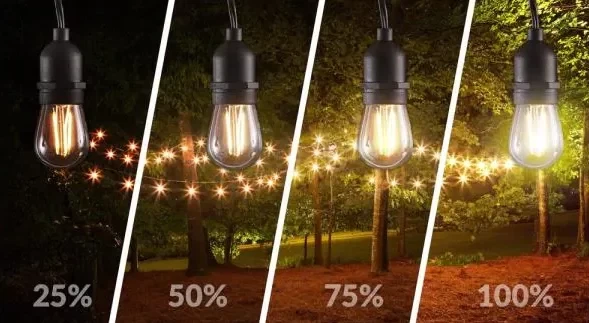A Practical Guide to Dimming LED Lights
LED lighting has become the standard choice for energy-efficient upgrades in both homes and businesses. These bulbs are designed to fit traditional sockets, making it easy to replace older incandescent, halogen, or fluorescent lights.
However, an important fact is often overlooked: not all LEDs are dimmable.
If you plan to use your LEDs with a dimmer switch, you'll need to choose the right products and possibly upgrade your dimming controls. This guide will help you understand how to identify dimmable LEDs, how dimming works, and what to consider for a flicker-free experience.
Do You Need Dimmable LEDs?
Dimmable lighting offers flexibility-allowing you to adjust brightness to match different activities and moods. In a kitchen, for example, you might want bright light for cooking and softer lighting for dining. In offices, dimmable LEDs can improve comfort and productivity by letting users customize their lighting.
However, dimming functionality requires both dimmable LEDs and a compatible dimmer. Using non-dimmable bulbs with a dimmer will cause flickering, reduced lifespan, and possible damage.
How to Know If Your LED Is Dimmable
Check the Packaging or Product Description
Only LEDs labeled as "dimmable" should be used with dimmer switches. Look for this indication on the box, product webpage, or datasheet. Some products may also use a dimming symbol (often a circle with a line through it or a gradient arc), though there is no universal icon.
Verify Dimmer Switch Compatibility
Many older dimmers were designed for high-wattage incandescent bulbs and may not work correctly with low-wattage LEDs. If you're upgrading to LEDs, you may need to replace your existing dimmer with an LED-compatible model, such as a trailing-edge or smart dimmer.

Why Aren't All LEDs Dimmable?
The dimmability of an LED depends on its driver-the internal component that regulates power to the LED.
Non-dimmable drivers are designed only for full on/off operation.
Dimmable drivers can adjust light output smoothly using techniques like Pulse Width Modulation (PWM) or analog dimming.
If you try to dim a non-dimmable LED, the driver will malfunction, causing flickering and potentially early failure.
How Does LED Dimming Work?
Unlike incandescent bulbs that dim simply by reducing voltage, LEDs require more advanced control. There are two common methods:
Pulse Width Modulation (PWM)
This method turns the LED on and off very rapidly. The ratio of on-time to off-time determines perceived brightness. Although the switching is too fast for the human eye to detect, some cameras may pick up flickering-making PWM less ideal for video applications.

Analog Dimming
This technique reduces the electrical current supplied to the LED. While simpler, it can sometimes cause color shifts at very low brightness levels.
Types of Dimming Controls
0-10V Dimming
Often used in commercial settings, this system uses a low-voltage control signal (0-10V) to adjust light levels. It provides smooth dimming and is widely compatible with professional-grade LED fixtures.
Leading-Edge (TRIAC) Dimming
Common in older homes, these dimmers work by cutting off the leading part of the AC power wave. They can cause buzzing or flickering with LEDs unless both the bulb and dimmer are designed to work together.

Trailing-Edge Dimming
Better suited for LEDs, these dimmers cut the end of the AC wave. They operate more smoothly and quietly than leading-edge dimmers and are increasingly used in modern installations.

Recommendations
Always use dimmable LEDs with LED-rated dimmers.
If flickering occurs, try a different dimmer or consult the bulb manufacturer's compatibility list.
For new installations, consider trailing-edge, 0-10V, or smart dimmers for best performance.
By choosing the right combination of bulbs and controls, you can enjoy full dimming range and longevity from your LED lighting.






